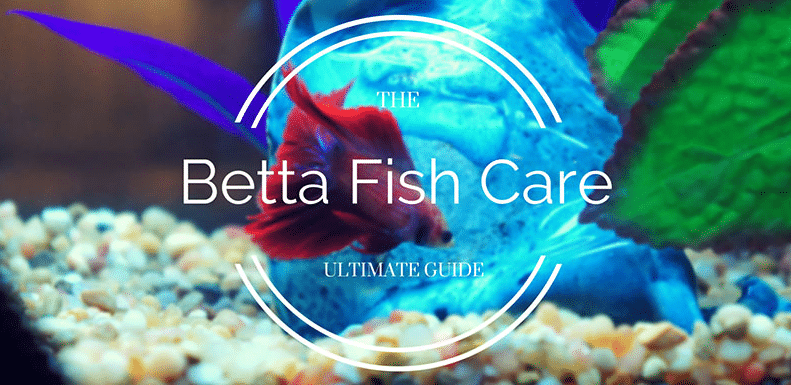How To Take Care Of Betta Fish
Betta Fish Care: You’ve carefully weighed your options and decided on a betta fish as your new pet – great choice! As far as fish go, bettas are one of the more intelligent species; they’ve been shown to recognize their owner and can even be taught to do tricks like pushing a ball through a ring with their noses. They’re also quite beautiful to look at with with their big, fluttering fins and brilliant coloring. These fish need just as much care, and in some cases even more, than their warm-blooded counterparts. Below, we’ll cover all of the pet care basics that new and prospective betta owners need to know.
Being able to take care of a betta fish, means knowing what makes them happy and healthy. It also means knowing what causes stress and disease so you can avoid it. In our comprehensive betta fish care guide, you’ll learn everything you need to know to promote a healthy habitat. This includes the recommended tank size, water quality and maintenance, feeding, and much more!

How To Care For A Betta Fish
Before running out to the pet store and picking out your new fish, it’s important to have everything you need. Talk to the fish specialist at the pet store about their recommendations. Here are the supplies and equipment you’ll need in order to own a betta fish:
- A five-gallon (or larger) fish bowl, tank or aquarium. A betta fish can live in a bowl as small as one gallon, but it is not recommended.
- Food in the form of pellets and insects.
- A thermometer to read the water temperature.
- These aren’t necessary, but you can purchase decorations (including live and artificial plants or floating driftwood pieces) or store-bought tank accessories for your betta’s bowl.
Bettas are a rare type of fish (called labyrinth fish) that have the ability to absorb oxygen from air as well as through their gills when in water. This is why betta fish have a higher tolerance for poor water quality and don’t necessarily need water filters or aerators. That said, a betta’s bowl still needs to be cleaned and its water changed regularly to keep it happy and healthy. With proper care, your pet betta fish can live anywhere between two and four years, sometimes even longer.
Setting Up a New Betta Bowl
First, rinse your decorations with warm water to remove any impurities. Then place your decorations into the bowl and set up any filter equipment that you want to include inside the bowl or tank. Bettas thrive in water temperature that’s between 77 and 86 degrees Fahrenheit and small fishbowls cannot support heaters. It’s extremely important that you don’t place the bowl near air conditioners, vents, direct sunlight or anywhere else that could affect the water temperature or quality.
Once you’ve got the furnishings in place, fill the bowl with bottled, filtered water or with water specifically labeled for bettas. Do not use tap water when changing your betta’s water or setting up its bowl, as it has harmful trace elements like chloramine, chlorine and heavy metals that can kill your fish. If tap water is your only available option, use it after pretreating it with Novaqua plus Amquel (to remove chlorine) plus aquarium salt (never table salt). Ask an expert at your local pet store for the right products to safely treat tap water (called conditioning) before attempting to treat your water at home.
Fish are highly sensitive to fluctuating water conditions, so you’ll need to acclimate your betta to its new home by putting it into a separate container (like a big glass) along with half the water that came with it from the pet store. Let the fish and water stand for about half an hour or until the temperature of the store water is equal to the water in the fishbowl. Then, add an equal amount of water from the fishbowl into the container with the fish, letting stand for about 20 minutes as the fish adjusts to change. Once the fish has adjusted, use a small fish net to remove the betta from the container and place it in the fishbowl. Keep the bowl and any containers your betta will be in covered with a lid that has hole in it for airflow, as betta fish can jump.
How To Take Care Of A Betta Fish
You will need to choose the right tank, but you also need to know how to pick the right equipment, prepare the aquarium and set it up. Let’s start with picking the right tank. This will depend on how many Betta Fish you are planning to keep. The minimum tank size for a Betta Fish is 5 gallons, but you should research your specific breed.
Once you have got your tank you will need to set it up. Avoid placing it under direct sunlight, like near a window. Lots of noise will also stress your fish, so the best place for your tank is a dimmed and quiet part of your home.
After the tank is in position, you need to consider the necessary equipment. Betta Fish really enjoy light, and for that reason the aquarium must be well lit. However intensive lighting can promote the growth of algae, to avoid this try using luminescent or LED lamps.
A filter and heater are essential for your Betta tank too. A normal internal adjustable power filter is an ideal solution. You can easily regulate it, adjusting the intensity of flow to make the tank comfortable.
Betta fish are used to living in tropical waters in Asia, and so you will need to use a heater to warm the water too. You can use a small fully submersible one. The best water temperature for Betta fish is between 75.2-80.5°F.
What about the substrate? First, a universal rule of choosing the right substrate applies. Carefully wash it and get rid of sharp granules, so it stays nice and smooth. In terms of the type, the finer the better. Coarse and sharp gravel can damage your fish, so choosing sand or fine gravel is ideal.
Aquarium decorations and plants must be chosen with care. Remember that anything you put into the tank influences the lifespan of your fish. All decorations should have a marking saying that they are aquarium. Now that you have all the components in place. It’s time to set the tank up. Test your waters over the next few weeks and once the tank has completed a full cycle, it’s time to add your Betta. Just check that the recommended ranges are: 75.2-80.5°F, 6-8 pH and 5-35 dGH.
How To Care For Betta Fish
With proper care, your betta could live up to ten years despite their average life of 2-4 years. This discrepancy is largely due to misinformation in pet stores, on the internet, and from other betta owners. Betta fish are a beautiful and intelligent species of fish and deserve proper care.
Taking care of your betta requires a little education and responsibility for both kids and adults. The beautiful betta is pretty resilient and inexpensive to purchase and maintain, and they can bring years of companionship and joy.
If you’re reading this, chances are you already have your betta fish at home. If not, pat yourself on the back for doing research prior to purchasing one. Knowing how to take care of a betta before you buy one will make things a lot easier; especially when purchasing a tank and other accessories for the first time.
You should be able to identify the difference between a healthy and a sick betta. This affects what type of care you will need to provide him or her over time. Even when first purchasing a betta fish, it’s important to choose one that is healthy. Experienced caretakers, however, may purchase sick bettas to help save them from death and disease. Below are common characteristics of healthy and sick bettas.
Betta Fish Care Sheet
Betta Fish are an incredible looking species. Their bright colors and diverse appearance is ultimately what makes them so popular worldwide. To keep them looking colorful and bright however, a healthy and consistent diet is required.
To best understand what to feed them it’s a good idea to look at their natural environment. Their natural habitats are diverse and warm basins in Thailand, Indonesia and Vietnam. These waters are usually filled with numerous invertebrates, insects, and other small organisms. Betta Fish are carnivores that live up to their name.
In the tank you can easily recreate these conditions. Given the popularity of Bettas, finding suitable foods is not a problem. There are many different options to choose from. One of the most popular choices is flakes. This types of foods can save you a lot of time. If you are just starting out, premade foods can help you avoid all the hassle associated with preparing live foods.
If you want to treat them, their diet can also include both frozen and dry foods. They can be fed brine shrimp or bloodworms – by far the most popular choices for Bettas. Because these fish are so small yet so active, they can often end up eating more than they can digest. If you notice that your fish looks exhausted or starts swimming in a strange way, don’t feed them for a day.
To avoid overfeeding pay close attention to how much you feed Bettas. Normally, adults should be fed twice a day. If you are using premade foods, the portion should be about a pinch or enough to fit on the tip of a knife. They should be able to eat all their feed in 5 minutes.
How do you know if your betta fish is happy?
The signs of a happy, healthy, and relaxed betta include: Strong, vibrant colors. Fins are held open, but not taut, allowing their fins to billow and fold in the water.
How long can a betta fish live in a fishbowl?
You can expect your Betta Fish to live for around 2 years from when you buy them. But it is possible that they will live for another year or so if you give them the best possible care. Make sure you choose the right sized fish tank, keep males separate, maintain the ideal water parameters and feed them a great diet.


